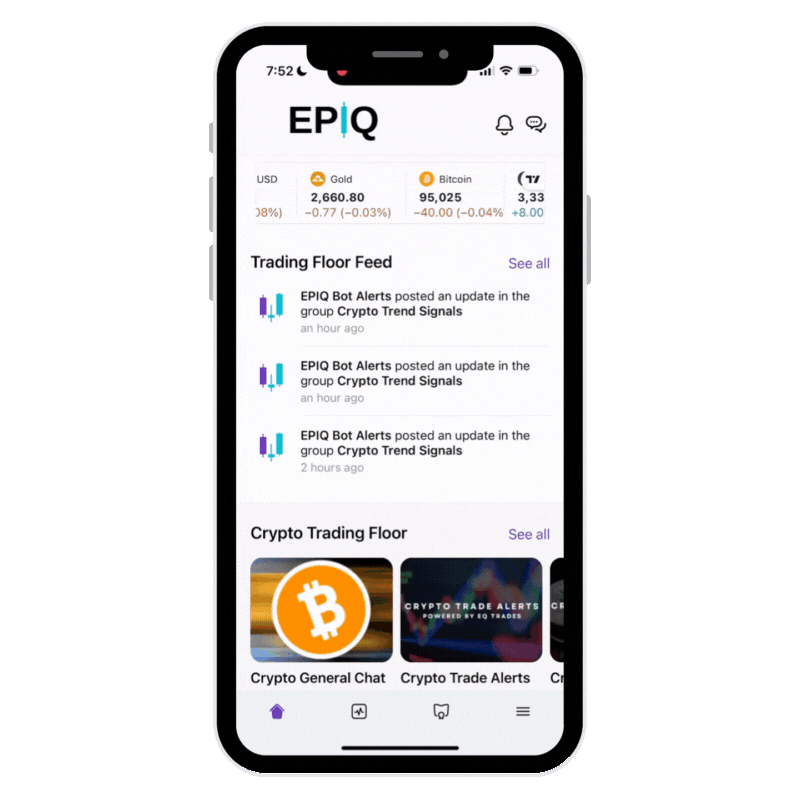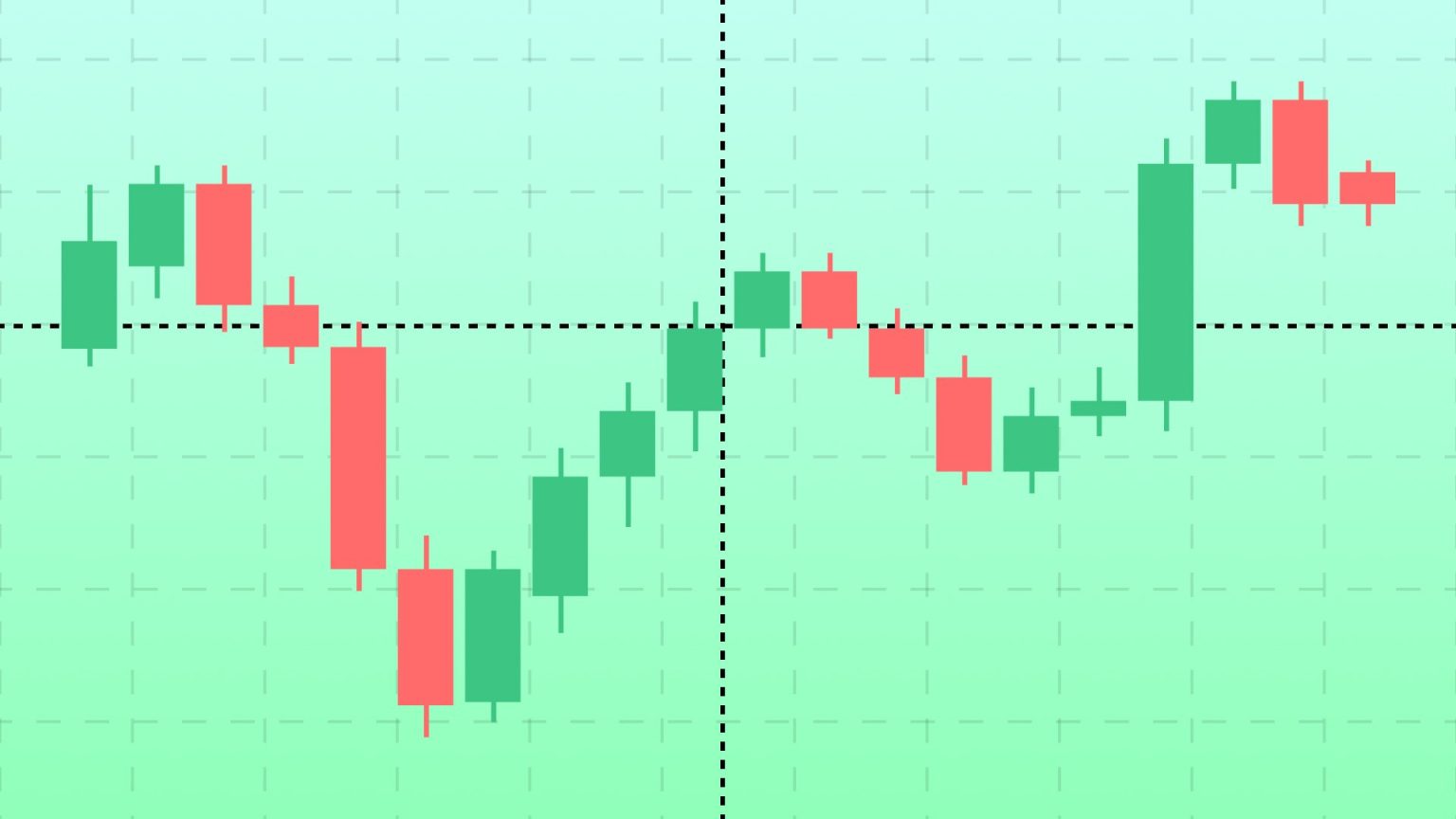Crypto scalping is one of the most popular short-term trading strategies in the market. Traders using this technique aim to make small but frequent profits by capitalizing on minor price fluctuations. Given the volatile nature of cryptocurrencies, scalping presents a high-risk, high-reward opportunity for traders who can execute quick trades with precision. In this guide, we’ll break down how scalping works, the best strategies to use, and key tools to improve your chances of success.
Want to take your trading skills to the next level? Join the EPIQ Trading Floor for real-time trade signals, expert insights, and exclusive trading tools. Use code “BLOG” at checkout for 10% off, and try all resources with a risk-free 3-day trial—cancel anytime within 72 hours without being charged. Sign up now.
What Is Crypto Scalping?
Scalping is a short-term trading strategy where traders enter and exit multiple positions throughout the day, aiming to profit from small price movements. Unlike swing trading, which involves holding positions for several days or weeks, scalping requires rapid execution, strong market awareness, and effective risk management.
Due to the fast-paced nature of scalping, traders rely on high liquidity assets and low slippage conditions to ensure their trades are executed efficiently. Many scalpers prefer trading Bitcoin (BTC), Ethereum (ETH), and high-volume altcoins because they offer better liquidity and lower spreads.
Key Scalping Strategies for Crypto Traders
1. Market-Making Strategy
Market makers place simultaneous buy and sell orders at different price levels to profit from the spread. This approach is ideal in highly liquid markets where spreads are consistently small. However, traders must monitor order book depth and market conditions to avoid being caught in large price swings.
2. Range Trading
Scalpers often trade within a predetermined price range, buying at support and selling at resistance. This strategy is effective when crypto markets are consolidating with no clear trend direction. Identifying strong support and resistance levels is crucial for success in range trading.
3. Breakout Scalping
Breakout scalping involves entering trades when price breaks a key resistance or support level with strong volume. Scalpers using this strategy watch for high volatility events, such as news announcements, institutional trades, or sudden price momentum shifts.
4. Using Moving Averages
Many scalpers rely on Exponential Moving Averages (EMA), especially 5, 10, or 20-period EMAs, to determine trend direction. When the price crosses above or below these short-term moving averages, scalpers take quick trades to capture the price movement.
5. Order Book Analysis
Advanced scalpers analyze crypto order books to detect market trends, liquidity pools, and potential price movements. A significant imbalance between buy and sell orders can indicate potential breakouts or breakdowns.

Best Crypto Exchanges for Scalping
Choosing the right trading platform is crucial for scalping. Look for exchanges with low fees, deep liquidity, and fast order execution. Some of the top exchanges for scalping include:
- Binance – Low trading fees and deep liquidity
- Bybit – Advanced order execution and leverage options
- Kraken – Strong security with low slippage trading pairs
- OKX – Ideal for perpetual futures scalping
Pros and Cons of Crypto Scalping
Pros:
- Quick Profits – Traders can generate multiple small wins per day.
- High Liquidity Trades – Scalping works best in active markets with deep liquidity.
- Minimal Exposure to Risky Events – Unlike long-term trading, scalping avoids overnight market risks.
Cons:
- High Trading Fees – Frequent trading can lead to significant fees if not managed properly.
- Emotional Stress – Scalping requires fast decision-making and discipline.
- Requires Advanced Tools – Success in scalping often depends on using real-time market data and technical analysis tools.
How to Manage Risk When Scalping
Since scalping involves high-frequency trading, managing risk is critical to long-term profitability. Here are some key risk management strategies:
- Use Stop-Loss Orders – Prevent massive losses by setting stop-losses on every trade.
- Limit Leverage – While leverage can amplify profits, it can also increase losses.
- Track Trading Fees – Keep an eye on exchange fees, as they can eat into your profits.
- Stick to a Trading Plan – Avoid impulsive decisions and stick to predefined entry and exit strategies.

Final Thoughts
Crypto scalping can be highly profitable for disciplined traders who can react quickly to market fluctuations. However, it requires patience, experience, and a solid understanding of market conditions. If you’re serious about mastering scalping strategies, the EPIQ Trading Floor provides real-time trading alerts, educational content, and direct coaching from experts to help refine your skills.
Start your journey today! Sign up for a risk-free 3-day trial at EPIQ Trading Floor and gain access to expert insights, live trade signals, and members-only resources. Use code “BLOG” at checkout for 10% off your membership!
Disclaimer
This article is for educational purposes only and does not constitute financial advice. Cryptocurrency trading involves risk, and you should conduct your own research before making any investment decisions.










Responses